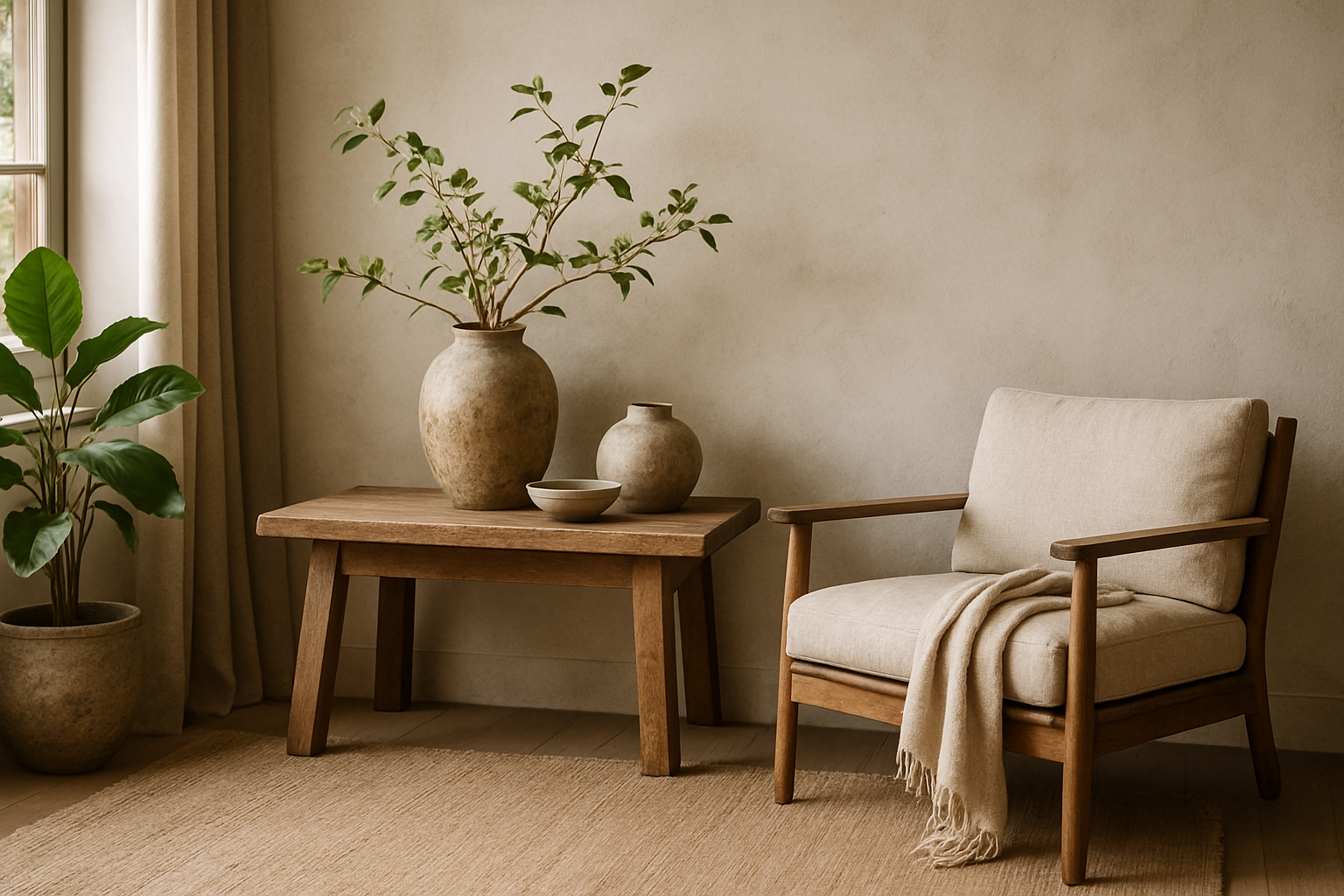Embracing the Wabi-Sabi Aesthetic in Western Homes
Imagine stepping into a space where imperfections are celebrated, where the passage of time is revered, and where simplicity reigns supreme. This is the essence of wabi-sabi, a Japanese philosophy that's quietly revolutionizing Western interior design. As homeowners seek respite from the relentless pursuit of perfection, the wabi-sabi aesthetic offers a refreshing alternative that honors authenticity, tranquility, and the beauty of natural imperfections.

In its early days, wabi-sabi was closely tied to the Japanese tea ceremony, where simple, handmade items were prized over elaborate, mass-produced ones. This philosophy soon extended beyond ceramics to influence architecture, garden design, and eventually, the broader Japanese approach to life and aesthetics.
Wabi-Sabi in Western Design
While wabi-sabi has been a cornerstone of Japanese aesthetics for centuries, its influence in Western design is a relatively recent phenomenon. As globalalization has brought diverse cultural influences into Western homes, designers and homeowners have become increasingly drawn to the serene and grounding qualities of wabi-sabi.
The appeal of wabi-sabi in the West can be seen as a response to the fast-paced, technology-driven lifestyles that many lead. It offers a counterpoint to the sleek, mass-produced items that dominate modern interiors, instead championing handcrafted, one-of-a-kind pieces that tell a story and evolve over time.
Key Elements of Wabi-Sabi Design
To incorporate wabi-sabi into Western homes, it’s essential to understand its core principles:
-
Embrace imperfection: Rather than hiding flaws, wabi-sabi celebrates them. This might mean choosing furniture with visible knots or grain patterns, or displaying ceramics with deliberate cracks or asymmetries.
-
Natural materials: Wabi-sabi favors organic materials like wood, stone, clay, and natural fibers. These materials age gracefully, developing character over time.
-
Simplicity: Clutter is the antithesis of wabi-sabi. Spaces should be pared down to the essentials, with each item carefully chosen for its functionality and beauty.
-
Neutral colors: The wabi-sabi palette is typically muted, favoring earthy tones and subtle variations in hue. This creates a calm, harmonious atmosphere.
-
Authenticity: Wabi-sabi values items with history and character over mass-produced pieces. This might mean incorporating family heirlooms, vintage finds, or locally crafted items into your decor.
Practical Applications in Western Homes
Incorporating wabi-sabi into Western interiors doesn’t require a complete overhaul of your space. Here are some ways to introduce this aesthetic:
-
Textiles: Opt for natural fabrics like linen, cotton, or wool in neutral tones. Look for pieces with subtle variations in texture or color, which add depth and interest without overwhelming the space.
-
Furniture: Choose pieces made from natural materials with visible grain or patina. Antique or reclaimed wood furniture fits well with the wabi-sabi aesthetic.
-
Ceramics: Handmade pottery, especially pieces with irregular shapes or glazes, embodies the wabi-sabi spirit. Display these items prominently as focal points in your space.
-
Plants: Incorporate plants with organic, imperfect forms. Bonsai trees, with their gnarled trunks and asymmetrical branches, are particularly well-suited to wabi-sabi interiors.
-
Lighting: Soft, diffused lighting creates a serene atmosphere. Consider paper lanterns or candles to add warmth and depth to your space.
The Psychology of Wabi-Sabi Spaces
Beyond its aesthetic appeal, wabi-sabi has profound psychological benefits. In a world that often glorifies perfection and newness, wabi-sabi offers a refreshing alternative that can reduce stress and promote mindfulness.
By surrounding ourselves with objects that bear the marks of time and use, we’re reminded of the transient nature of life. This can foster a sense of acceptance and gratitude, helping us to find beauty in the present moment rather than constantly striving for an idealized future.
Moreover, the simplicity and authenticity of wabi-sabi spaces can create a sense of calm and groundedness. In contrast to cluttered, overstimulating environments, wabi-sabi interiors provide a peaceful retreat where one can truly relax and recharge.
Challenges and Considerations
While wabi-sabi offers many benefits, incorporating this aesthetic into Western homes can present challenges. One common pitfall is the temptation to purchase new items that mimic the wabi-sabi look, which goes against the philosophy’s emphasis on authenticity and the natural aging process.
Another consideration is balancing wabi-sabi with practicality. While the aesthetic favors simplicity, it’s important to ensure that your space remains functional and meets your daily needs.
Lastly, it’s crucial to approach wabi-sabi with respect for its cultural origins. Rather than viewing it as a trend to be adopted superficially, take the time to understand and appreciate the deeper philosophy behind the aesthetic.
The Future of Wabi-Sabi in Western Design
As more people seek alternatives to the culture of consumerism and perfectionism, wabi-sabi is likely to continue gaining traction in Western design. Its emphasis on sustainability, mindfulness, and connection to nature aligns well with growing environmental concerns and the desire for more meaningful, less materialistic lifestyles.
Moreover, as the lines between work and home continue to blur, the calming influence of wabi-sabi interiors may become increasingly valuable. These spaces can provide a much-needed antidote to the digital overwhelm many experience in their daily lives.
In conclusion, wabi-sabi offers a compelling alternative to prevailing Western design aesthetics. By embracing imperfection, celebrating the passage of time, and finding beauty in simplicity, we can create homes that not only look beautiful but also nurture our well-being and connection to the world around us. As we navigate an increasingly complex and fast-paced world, the timeless wisdom of wabi-sabi may prove more relevant than ever.





